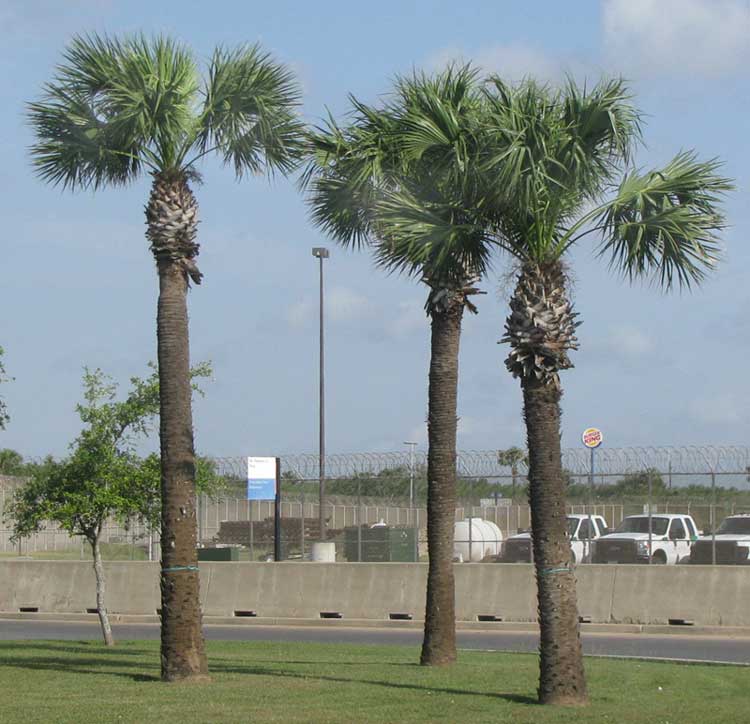Excerpts from Jim Conrad's
Naturalist Newsletter

from the April 1, 2012 on-the-road Newsletter based on notes and pictures from Brownsville, Texas, USA
MEXICAN/TEXAS PALMETTO
Crossing the Rio Grande from Matamoros, Tamaulipas into Brownsville, Texas, after having my passport checked by a chatty former history teacher who found that the Border Patrol paid much better, I had to wait as the bus was "X-rayed" in a special, carwash-like building. Three palms stood at the checkpoint edge with Border Patrol trucks behind them, as seen above.

Above, an enlargement of part of that picture shows -- especially in a frond in the upper, left corner -- that in this species frond petioles continue up into the blade, diminishing and curling as they go (they're "costapalmate," very different from the above Broom Palm), and its petiole bases split (barely visible in a base at the picture's bottom right).
Back in the Yucatán our Huano, or Thatch Palm, Sabal yapa, was a fan palm with costapalmate blades and with split petiole bases, so are these Brownsville palms the same species? Our well illustrated Huano page is at http://www.backyardnature.net/yucatan/huano.htm.
Nope, this is a different species. For one thing, in that last picture, note that the inflorescences of the Brownsville tree are much shorter than the fronds, but on Huanos they become much longer.
Though usually it's tricky identifying planted species, since they might come from anywhere, our Brownsville palms look like they're SABAL MEXICANA, known by various English names, including Mexican Palmetto, Texas Palmeto, Texas Sabal Palm, and Rio Grande Palmetto. Its Texas names reflect the fact that earlier Texas populations were regarded as being a distinct Texas species, Sabal texana, but that species now has been lumped into S. mexicana.
So, Brownsville's Mexican Palmettos occur naturally from the Lower Rio Grande Valley of Texas south along both coasts to Nicaragua. It's one of the most widespread and common palm trees in Mexico, where it grows in drier lowlands, plus it's much planted in places like Brownsville. Historical records report them growing naturally as far north as San Antonio, Texas, but those populations appear to have been destroyed.